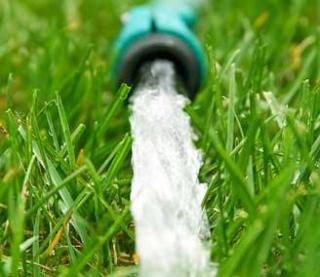Caring For Trees in Dry Weather

WATER TREES DEEPLY DURING WARM WEATHER
When temperatures in Oregon get warm and stay warm, it can take a toll on trees as well as people. The Oregon Department of Forestry suggests a few tips for keeping your trees healthy during times of heat stress.
“Summer temperatures can be hard on trees, especially the landscape trees in our urban areas," said Paul Ries, an urban forester with the Oregon Department of Forestry. "Warm weather and prolonged drought can make trees more susceptible to insect and disease problems," adds Ries.
Symptoms of drought
One of the first signs that a deciduous tree (i.e., trees that lose their leaves in the winter) needs water is that its leaves begin to look dull. Advanced symptoms of needing water are yellowing of leaves, wilting, and curling at the edges.
Leaves may also develop a scorched or burned look - turning brown on outside edges, or between leaf veins. Leaves may also appear smaller than usual, change to fall color or drop prematurely, or turn brown, but remain on the tree. Evergreen needles may turn yellow, red, purple or brown.
Watering tips
Be aware that the water you need to keep your lawn green is not enough for a tree. If trees are only provided with shallow water, every day, they're probably only getting a fraction of what they need. Also, watering trees for short periods of time encourages shallow rooting, which can lead to future health problems for the tree. Given their benefits and longevity, trees should be given higher watering priority over lawns.
To make sure your tree gets the water it needs, saturate the soil within the drip line – that’s the circle that could be drawn on the soil around the tree directly under the tips of its outermost branches. Using a regular hose or a soaker hose, water deeply and slowly – slowly is important, so the water doesn’t run-off.
For conifers, water 3’ – 5’ beyond the drip line on all sides of the tree. Also, if you have a choice, water during the cooler part of the day for all trees. Another way to water trees slowly is to put a nail hole in the bottom (near the edge) of a five gallon bucket. Fill the bucket with water, and leave the slowly leaking bucket under the canopy of the tree. Do this two or three times per tree, moving the bucket each time.
Lastly, trees are part of a city’s assets, but monitoring them for drought stress is sometimes difficult. Should you spot trees on public property that show signs of drought stress, contact local city staff. You’ll be helping your city care for a public benefit by letting them know.
Other tips – use mulch
Using mulch is a good way to care for trees in warm weather, since mulch helps the soil below trees retain moisture and stay cool. Mulch can be made of bark, wood chips, leaves and evergreen needles. Apply mulch within the drip line, at a depth of four inches, leaving a six-inch space between the mulch and tree trunk. Mulch also helps discourage weeds.
Do not plant annual flowers or other groundcovers under the canopy of your tree. Any plants below a tree’s canopy compete with the tree’s roots for moisture and, since they are often closer to the surface than the tree’s roots, will get any limited water before the tree does. Remove lawn and replace it with a ring of mulch.
Tree care - always a good investment
Trees and forests enhance quality of life in many ways, providing shade, wildlife habitat, wood and other products, raising property values, and providing clean, healthy streams. Proper tree care - including deep watering of trees during hot summer months - pays big dividends in the long run.
